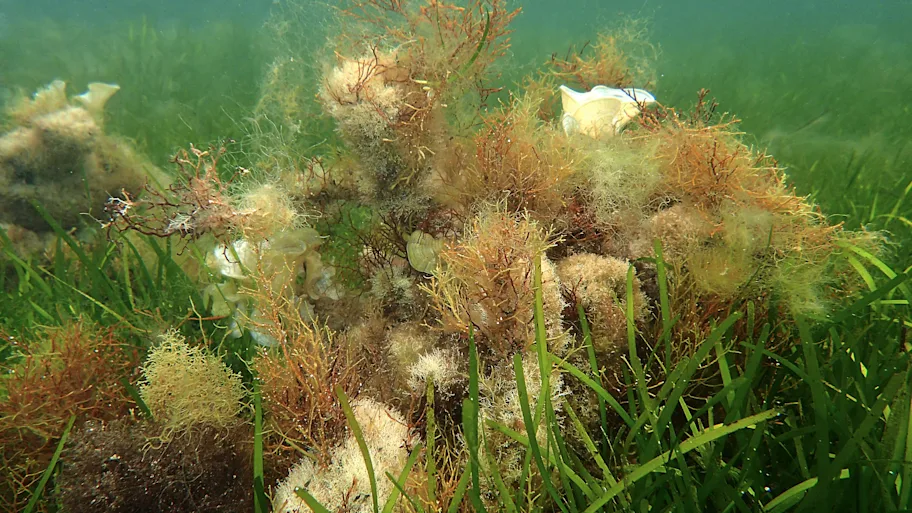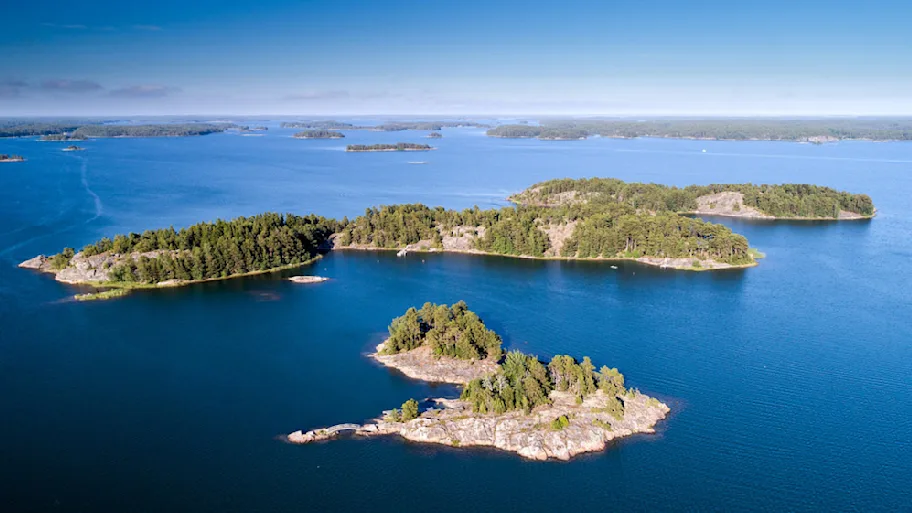
- Science News
- Featured news
- More than 100 underwater animal species found living on 2,200-year-old Mediterranean shipwreck
More than 100 underwater animal species found living on 2,200-year-old Mediterranean shipwreck
By Mischa Dijkstra, Frontiers science writer

The ship’s ram as it was found on the seabed off Sicily at a depth of nearly 90m. Image credit: K. Egorov / Società per la Documentazione dei Siti Sommersi – Global Underwater Explorers (SDSS-GUE)
Italian researchers found amazing community of 114 species of invertebrates on priceless archeological artifact, including ecological ‘constructors’, ‘binders’, and ‘dwellers’
On March 10, 241 BCE, a sea battle took place near the Aegadian Islands off northwestern Sicily. A fleet equipped by the Roman Republic destroyed a fleet from Carthage, ending the First Punic War in Rome’s favor. But scientists have now shown that this destruction and carnage utimately made a a rich flowering of marine life possible.
In a recent study in Frontiers in Marine Science, they reported finding no fewer than 114 species of animals, coexisting in a complex community, on a ship’s ram from a Carthaginian ship sunk in the battle.
This is the first study of marine life on a very ancient wreck. The ram is not only a priceless archeological find, but also a unique window into the processes by which marine animals colonize empty sites and gradually form mature, stable, diverse communities.
“Shipwrecks are often studied to follow colonization by marine organisms, but few studies have focused on ships that sank more than a century ago”, said last author Dr Sandra Ricci, a senior researcher at Rome’s Istituto Centrale per il Restauro (ICR).
Here we study for the first time colonization of a wreck over a period of more than 2,000 years. We show that the ram has ended up hosting a community very similar to the surrounding habitat, due to ‘ecological connectivity’ – free movement by species – between it and the surroundings.”
An archeological marvel
The ram, nicknamed ‘Egadi 13’, was recovered in 2017 from the seabed around 90 meters deep by marine archeologists from the Soprintendenza del Mare della Regione Sicilia, directed by Dr Sebastiano Tusa, in collaboration with divers from the organization Global Underwater Explorers.
It consists of a single, hollow piece of bronze, engraved with an undeciphered Punic inscription, and is around 90cm long, 5cm thick at the front edge, and has a weight of 170kg. Because the ram is hollow, it has accumulated organisms and sediments inside as well as outside.
► Read original article► Download original article (pdf)
In 2019, it was cleaned and restored by ICR material scientists. As part of the restoration, all marine animals were collected alongside hardened biological materials and blocks of sediments from inside and outside the ram. These samples were then studied by Ricci and colleagues from ICR, the University of Rome Tor Vergata, Italy’s National Interuniversity Consortium for Marine Science (CoNISMa), the National Research Council of Oristano, the Parthenope University of Naples, and the Sapienza University of Rome.
The ‘constructors’
The scientists’ aimed to compare species associated with the ram with those found in natural Mediterranean habitats, and so reconstruct how it had been colonized – mostly by dispersing larvae – from these habitats. Another focus was to understand the mechanisms by which species already established at the ram can allow other species to thrive.
Ricci and colleagues found a species-rich community, structurally and spatially complex, with 114 living invertebrate species. These included 33 species of gastropods, 25 species of bivalves, 33 species of polychaete worms, and 23 species of bryozoans. This species assemblage was statistically most similar to those found in shallow-water detritus beds and seagrass meadows, and on well-lit rocky seabeds and ‘coralligenous’ reefs, which are built on hard substrates in dim light by algae with calcareous skeletons.
“We deduce that the primary ‘constructors’ in this community are organisms such as polychaetes, bryozoans, and a few species of bivalves. Their tubes, valves, and colonies attach themselves directly to the wreck’s surface,” said coauthor Dr Edoardo Casoli from Rome’s Sapienza University.
“Other species, especially bryozoans, act as ‘binders’: their colonies form bridges between the calcareous structures produced by the constructors. Then there are ‘dwellers’, which aren’t attached but move freely between cavities in the superstructure. What we don’t yet know exactly is the order in which these organisms colonize wrecks: that will be the subject of a future investigation.”
Corresponding author Dr Maria Flavia Gravina concluded:
“Younger shipwrecks typically host a less diverse community than their environment, with mainly species with a long larval stage which can disperse far. By comparison, our ram is much more representative of the natural habitat: it hosted a diverse community, including species with long and short larval stages, with sexual and asexual reproduction, and with sessile and motile adults, who live in colonies or solitary. We have thus shown that very old shipwrecks such as our ram can act as a novel kind of sampling tool for scientists, which effectively act as a ‘ecological memory’ of colonization.”



Researchers sampling animal life from the ship's ram (top and middle), with close-up (bottom). Image credit: Image credit: Istituto Centrale per il Restauro (ICR) - Laboratory of Biological Investigation
REPUBLISHING GUIDELINES: Open access and sharing research is part of Frontiers’ mission. Unless otherwise noted, you can republish articles posted in the Frontiers news site — as long as you include a link back to the original research. Selling the articles is not allowed.






